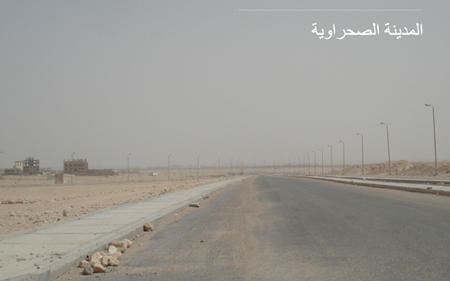Desert City

Students: Tânia Oliveira de Jesus
The research on New Assiut investigates another paradigm of the current development of urbanisation in Egypt and the Nile Valley – the so called New Towns developments or Desert Cities - established in the mid-70s by the GOE as a large scale urbanisation program and part of the New Town Policy. In this period the government first recognized that the inhabited areas along the Nile – especially in the Greater Cairo Region - were no longer able to absorb the growing population and therefore decided to open ‘the door to conquest the desert’.
In the aftermath of the revolution under Gamal Nasser, attempts to modernise the country through a strongly state regulated policy were launched (ie. the Greater Cairo Region Master Scheme.) They were calling for creation of four industrial new towns that would generate the advent of modern peasantry – and turn the peasants into city dwellers.
His successor Anwar Sadat had turned these ideas into an ambitious program of building of fourteen New Towns - the so-called First generation of Desert Cities - that would not only be concentrated in the Greater Cairo Region but would also spread in the desert along the Nile Valley. While the population of these new towns was at first restricted to about 500’000, the new satellite settlements – the Second generation - launched in mid-80s with a size of about 120’000 inhabitants were planned additionally in the desert territories surrounding Cairo. In parallel of New Settlements or New Towns of the Third generation were established as twin-towns or sister-towns to provincial cities along the Nile.
Originally, they were planed to attract both private and public investors and to provide the working classes with public housing. However, the adoption of neoliberal dogma by the government in the aftermath of the early 90s IWF and World Bank program to restructure the Egyptian economy had an enormous impact on the future of this form of desert urbanisation.
An opening to foreign investments and a shift to a massive real estate boom and speculation in the private sector had changed the original idea of the New Town program drastically, as they were no longer in the service of the demands of the increasing population, but merely fulfilling the desires of a rising upper middle class elite. Today the real estate market is becoming one of the largest economic factors for state revenues.
New Assiut – being the Third generation New Towns – is a good example of the current stage of this development. A large area of its public housing facilitated with minimal public infrastructure is already completed, but the major part of the future city, which offers plots to the private market, is still under construction. The state had reduced its involvement in the development down to the lying of a road and infrastructure networks, and private developers are allowed to construct houses within a time frame of maximum five years. This very slow construction process creates an almost surreal condition of the urban fabric – the city not yet inhabited has an appearance of a ghost town.

